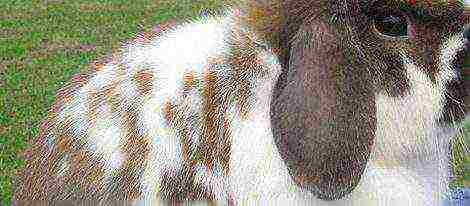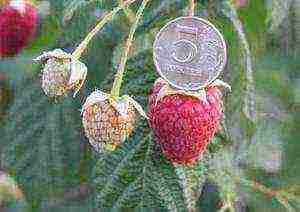Content [show]
Irga canadian is a very interesting fruit and ornamental crop. Deciduous shrub with a height of 1.5 to 8 meters is beautiful at any time of the year. In spring, the irga looks attractive during bud opening, when it seems to be shrouded in silvery-white frost.
Later, during flowering, it is strewn with clusters of fragrant white flowers surrounded by bees. Until mid-summer, the shrub is decorated with clusters of blue-purple berries. Until late autumn, the decoration of the shrub is foliage, which gradually changes color from green to crimson. Burgundy-brown branches look spectacular against the background of a snow-covered winter garden.
Description of canadian irgi
Let's start with a description of Irga is a fast-growing, fast-growing, long-lived shrub. The culture enters fruiting after planting in the third year. The life expectancy of an irgi is 40-50 years. Frost resistance is excellent, tolerates frosts up to 40 degrees without losses. In the conditions of the Moscow region, it does not need shelter for the winter. The plant also feels good in more northern regions. Well-growing bushes are very light-requiring and, if too densely planted, stretch up strongly and bear fruit poorly.
The root system of the bush is superficial, the bulk of the roots is located at a depth of 40 cm, some of them go down to 1 m. The radius of the root system reaches 2 m.
Irga blooms in late April - early May, for 10-15 days. The flowers can withstand short-term spring frosts down to -7 ° C.
The shrub is not picky about the quality of the soil, it is drought-resistant. Irga grows quickly - already in the third year after planting it begins to bear fruit, and at the age of 8-10 years a period of full productivity begins. The period of productivity is 20-30 years with an average yield of 8-10 kg of berries per bush.
The advantages of the shrub are early and abundant fruiting, the self-pollination of the plant ensures annual fruiting. Irga is unpretentious to growing conditions, very winter-hardy and drought-resistant.
Beneficial features
Irgi berries are a good multivitamin containing vitamins C, B2, carotene, pectins, anthocyanins and trace elements (cobalt, copper, lead). The fruits are useful in the treatment of hypo- and avitaminosis, for the prevention and treatment of atherosclerosis, diseases of the gastrointestinal tract, cardiovascular system.
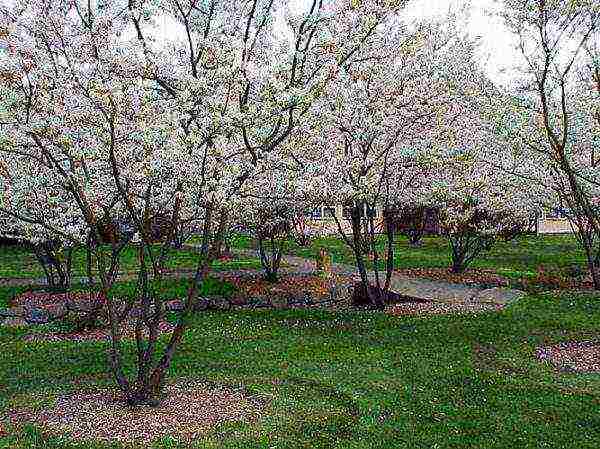 Flowering of the canadian irgi Slate
Flowering of the canadian irgi Slate
The healing properties of irgi berries
- calms the nervous system, useful for insomnia and restless sleep;
- increase the elasticity of the walls of blood vessels and strengthen them;
- used for the prevention of myocardial infarction and varicose veins (prevents the formation of blood clots);
- have a tonic effect, lower high blood pressure and normalize cholesterol levels;
- used for the prevention of peptic ulcer disease and as an anti-inflammatory agent for disorders of the gastrointestinal tract;
- the berry is useful in the fight against sclerosis;
- juice from fresh berries has astringent properties, so it is used to gargle with an inflammation of the throat.
Types and variety of varieties
Irga is from the Rosaceae family and has more than 25 species. The most common ones are:
- Irga canadian - shrub with drooping branches up to 6 meters high. It is appreciated for very sweet, tasty berries weighing up to 1 g. Yields up to 6 kg / bush. The greens are lush, very good in hedges when planted after 2 meters. It is a fast-growing shrub with an annual growth of up to 40 cm in height and width.
Over the past 60 years, Canada has been a breeding center for the best varieties of Irgi. The most popular among gardeners are:
- Pembina - the height and width of the shrub reaches 5 meters. The crown is spreading. The advantage of the variety is the formation of a small amount of root growth.
- Smokey - shrub up to 4.5 m high, crown in the form of an open umbrella. A variety with a late flowering period, which makes it possible for it to avoid the loss of the ovary during late spring frosts. Smokey's berries are large, up to 14mm in diameter, with a great aroma. The berries are the sweetest of all available varieties, fleshy and without astringency.
- Northline - a multi-stemmed bush of medium size, vertical trunks. The berries are very large, up to 16mm in diameter, blue-black with a waxy bloom, ripening of non-cracking berries is amicable. The variety forms a lot of root growth. Needs a pollinator.
- Sturgeon - multi-stemmed, spreading shrub up to 3 m high. The variety is high-yielding, the berry clusters are long, the fruits are large and sweet.
- Thyssen - a shrub reaching a height of 5 m with a highly spreading, rounded crown. This is the earliest, fastest growing variety. The size of berries of excellent taste reaches 17mm in diameter. Fruits are fragrant with a slight sourness. Due to the uneven ripening of the berries, the harvesting period is extended in time. Frost resistance up to - 28 ° С.
- Irga Lamarca Is a large shrub or small tree up to 8 meters high. The crown has a rounded shape. Unlike Canadian Irga, it grows more slowly, the annual growth is no more than 25 cm in height. Irga Lamarca is very beautiful during the flowering period and in the crimson foliage decoration in autumn.
The trunks take on a beautiful curving shape when shaped regularly. Such trees look good in single plantings and alleys.
 Blooming Canadian Irgi Lamarck
Blooming Canadian Irgi Lamarck
Often in the gardens there is also spiked irga and round-leaved irga, they are decorative and their fruits are also eaten, but they are smaller in size and the taste of berries is low.
Planting, growing and care conditions
Irga is undemanding to the growing conditions, and is not capricious in care.
In the garden or in the garden, it can be planted from the north side, since its multi-stem bushes trap snow and protect from cold northern winds. It is good to plant raspberries, currants, gooseberries next to it, for them it will serve as a good protection.
Irga can be planted both in spring and autumn. In a prepared hole, seedlings are planted 5-10 cm deeper than they grew before, this will contribute to the growth of more basal shoots. After planting and abundant watering, the soil around the seedlings is mulched, the plant is cut to about 1/3 of the height, leaving no more than 5 well-developed buds. Plants are planted every 2-3 m, and when creating a hedge, it is preferable to plant in a checkerboard pattern every 0.5-0.7 m in rows and between plants.
Further care consists in watering during dry periods, loosening the soil around the bushes and feeding. Irga is responsive to fertilizers. During the season, it is advisable to feed it monthly with liquid organic fertilizers (infusions of mullein or bird droppings), combining them with watering and making foliar dressing with micronutrient fertilizers. The plant will be grateful to you.
 Variety of Canadian Irgi Linez
Variety of Canadian Irgi Linez
Pruning
If you decide to form a plant in the form of a multi-stem bush, then in the first years after planting it is necessary to remove all weak shoots, leaving 2-3 of the strongest zero shoots from the root growth. A well-formed bush consists of 10-15 branches of different ages.
When the annual growth of the shoots is no more than 10 cm, they begin rejuvenating pruning, which consists in removing all weak and strongly elongated shoots. The rest are cut to a height of 2.5 meters. All places of large cuts must be treated with garden varnish.
For greater decorativeness of the canadian irgi, its crown should be formed in an oval shape when pruning. The result of such pruning will be a powerful growth of young shoots with the formation of fruit buds.
Irgu Lamarca is formed with a tree with 3-5 trunks, the rest of all basal shoots are removed throughout the season. The branches are shortened annually.
When using Irgi canadian in creating a hedge, it is necessary to cut it annually, shortening the annual growth by 10-15 cm. Annual pruning will contribute to better branching.
Reproduction
There are several ways to propagate Irga Canadian:
- Seeds. Seeds are harvested from large, ripe berries from the most productive bushes. The berries are allowed to lie down for a week, and then the seeds, when they are well separated from the pulp, are removed. The seeds are sown in the fall in the year of harvesting. The seeds are sown in the furrows, watered well, and covered with foil on top. When planting seeds in spring, they must be stratified for 3 months in wet sand in the basement. With good care in the first year, seedlings can reach a height of 10-15 cm, for 2 years their height will be up to 40 cm, after 2 years the seedlings are transplanted to a permanent place.
- Root offspring... With this method of reproduction, root shoots are used. It is separated from the mother bush and transplanted to a permanent place. The time for transplanting is spring or autumn.
 Reproduction of irgi by offspring
Reproduction of irgi by offspring - Green cuttings. Reproduction by green cuttings in canadensis is quite successful. 95% of cut shoots are rooted. Green cuttings are cut during intensive growth of shoots from the end of June to the first ten days of July. Cuttings are cut from the upper part of 5-6 year old branches, the length of the cuttings should be 12-15 cm. From the cut cuttings, the lower leaves are removed, leaving only two pairs of the upper ones. The lower cut of the cutting is processed in a root former and planted obliquely at a distance of 5 cm from each other. The cuttings are planted in greenhouses, where it is necessary to maintain air humidity at 70-80%. Rooting takes place over 20-25 days. After rooting, the film is removed, and further growth of plants takes place in the open air. It is necessary to make regular watering and feeding. In the spring of next year, the plants are ready for transplanting.
 Reproduction of irgi green cuttings
Reproduction of irgi green cuttings - Reproduction by layering. With this method of reproduction, well-developed one or two-year branches are taken. Layers are best done in early spring, as soon as the soil allows. Grooves are made near the bush in which the selected branches are laid. The laid shoots are pinned to the ground with metal staples, the tops of the shoots are shortened. After growing from the buds of the allotted branches of green shoots to a height of 10-12 cm, they are sprinkled with earth at half the height, after 20 days, the procedure for sprinkling with earth is repeated. In the fall, grown plants can be planted in a permanent place.
- Reproduction by dividing the bush. This method is used when it is necessary to transplant an adult bush to another place. The plant is dug up in early spring or late autumn, the roots are freed from excess soil, old branches are removed. The rhizome is divided into parts, the roots are shortened and planted in prepared planting pits.
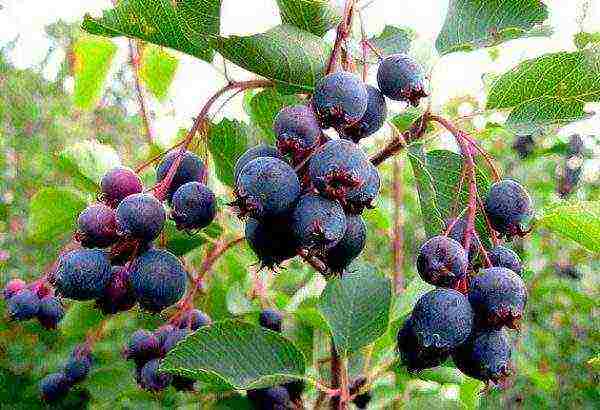 Ripe juicy berries of canadian irgi
Ripe juicy berries of canadian irgi
Pests and diseases
Irga canadensis is resistant to major fungal diseases and pests. It can be affected by the caterpillars of the currant leafworm, the caterpillar of the rose leafworm. They harm the leaves and gnaw the tops of young shoots. To combat pests when processing the garden, you must not forget to spray the irgi bushes.
During the ripening period of berries, birds do great harm to it, which also love to feast on its juicy and tasty berries. In order to avoid loss of yield, young bushes can be covered with a net. When the plants are already large, there are enough berries for everyone.
Vitamins - for future use
Irga bears fruit annually and abundantly, but its berries ripen unevenly and therefore they are harvested in several stages.
The shelf life of the harvested berries is short, only 2-3 days, provided they are stored in a cool place (basement or refrigerator).
Compotes, juices, preserves, jellies, wine are prepared from sweet irgi berries, they are dried and frozen. Irgi berries, due to their low acid content, do not have a bright taste, but they have a very bright color. In this connection, it is very good to add them to compotes from apples, pears and other fruits that do not have a pronounced color.
Particular attention should be paid to the dried fruits of the irgi, they may well replace the expensive raisins. Dried berries retain their properties for a long time. They are kept in closed glass jars.
A characteristic feature of irgi is the poor yield of juice from fresh berries. After 5-7 days of storage, the juice yield during processing will be up to 80%.
Blanks
Irgi berry juice is good for the eyes, heart, throat, blood vessels. The prepared juice is used for the preparation of fruit drinks, drinks, jelly.
Sugar Juice
The berries lying in a cool place for a week are washed, squeezed out, mixed with sugar in a 1: 1 ratio. Heat the juice over low heat until the sugar is completely dissolved, without bringing it to a boil. The heated juice is poured into glass jars or bottles, sealed and stored in a cool place.
Natural juice
Juice is squeezed out of the prepared berries, poured into liter cans, pasteurized for 15-20 minutes and rolled up with lids.
Irga canadian, due to its medicinal, taste and decorative qualities, deserves a place of honor in the garden or in the country. Leaving is minimal, but benefits and pleasures are abundant.
In terms of endurance, decorativeness, taste, the Canadian Irga is one of the best representatives of a vast genus. Canadian breeders have effectively worked on the "image" of the fruit shrub, creating dozens of large-fruited varieties on the basis of the natural species. The similarity of climatic conditions allows most of them to be successfully cultivated in the European part of Russia, Siberia, and the Urals.

Unusual berry - fresh like blueberries, dried like raisins
Natural potential of irgi canadian
Irga canadensis is a large multi-stemmed shrub, rather resembling a tree with thin bare trunks and a lush broad-oval crown. It has high energy and growth rates - in 3-4 years it grows 2 or more meters in height, in adult form reaches 6-8 m, in botanical gardens there are specimens under 11 m. The plant is distinguished by its durability, in one place it can grow over 50 years old.
The shrub vegetation begins in the second half of April with bud break. Young leaves are soft, felt, brown-green, pubescent. Then comes 1–1.5 weeks of boiling white flowering with large drooping clusters. They are replaced by brushes of fruits - tiny apples, which during the ripening period change color from cream with a pink barrel, through all shades of red, to bright purple, and then dark purple. Irgi berries begin to ripen in July, depending on the variety, the yield can last from one to several weeks.
Note! Species representatives of the Irga canadensis begin to bear fruit at the age of 5 years, varietal shrubs are distinguished by early maturity - they give the first berries as early as 2-3 years.
The biological characteristics of irgi contain clear signs of endurance and unpretentiousness.
- Like most fruit crops, it is photophilous.
- It does not need a lot of heat for development, it can withstand frosts in the range of 40–50⁰ С.
- It is not afraid of spring frosts even during the period of swelling of flower buds.
- Feels comfortable on soils with a minimum nutrient content.
- Drought-resistant, does not need regular watering.
- Self-fertile, with abundant ovary.
And a few words about the decorative value of culture. If the Irga is common or spiky, common in the middle lane, is more suitable for hedges, group plantings, then the Irga canadian is a soloist, "the first beauty", capable of outshining many. Graceful trees look like slender dancers, depending on the season in snow-white, dark green berries with purple beads, crimson outfits.
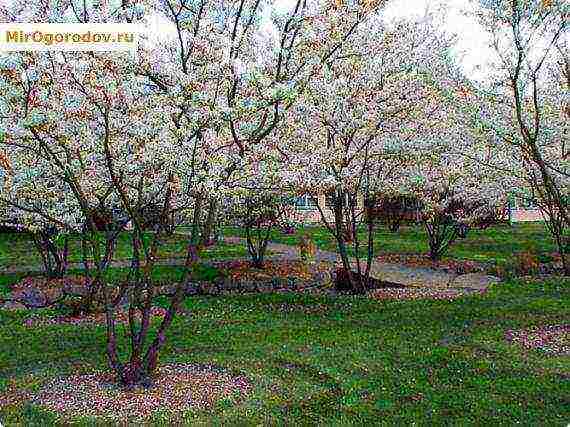
The best large-fruited varieties
One of the reasons why a shrub with tasty and healing fruits is not very popular - small berries (up to 0.7 cm in diameter) and low yield per bush. The large-fruited irgi varieties, which have become the hallmark of Canadian breeders, are devoid of this drawback. "Yablochko" with a diameter of up to 20 mm, large brushes, sweet pulp, amicable ripening - this is not a complete list of the advantages of varietal irgi. Unfortunately, there is not a very extensive assortment of culture on free sale, but there is plenty to choose from.
- Irga Martin is a second generation hybrid derived from the Thyssen variety. I took only the best features from the parental form - large (ø15 mm) juicy berries with an excellent refreshing taste, early ripening, stable yield, compact bush with a moderate amount of growth. Unlike the Thyssen variety, it is characterized by amicable ripening of berries, it is resistant to pests.
- Irga Prince William is not as large as the previous variety, but it has a number of other advantages, including high frost resistance and decorative effect. In autumn, the foliage turns into an intense red-orange color and does not fly around for a long time, pleasing the eye with a bright outfit. Suitable for small gardens - the plant has a compact crown and a height of no more than 2.5 m.
- Irga of the Pambina variety, on the contrary, belongs to large shrubs. In its adult form, it is a sprawling, multi-stemmed tree up to 5 m high and with the same crown diameter. Taking into account the large berry (ø15 mm), stable and high yield, one plant is enough to provide the family with fresh fruits and prepare a vitamin supplement for the winter. Gardeners appreciate the variety for the small amount of root growth.
- Irga Canadian Ballerina was named for her graceful silhouette and decorative properties. The variety is tall, large-fruited (berries ø12 mm), the pulp is juicy, sweet, with a light almond aroma. Ripening dates are average (starting in July). The plant is winter-hardy, unpretentious to moisture and nutrition, but on fertile, moderately moist soil, the size and taste of the berries noticeably improves.
- The variety of Irgi Slate possesses attractive characteristics, the description of which includes the early ripening of berries (June), large-fruited (up to 12 mm), rich sweet taste, enviable winter hardiness. These qualities are especially valuable for regions with short summers and cold winters. Another plus is amicable ripening and simultaneous yield of the crop.
- The Canadian Irgi Smokey variety has become almost classic. The tall, spreading tree is literally strewn with full clusters of large, even, dark blue fruits. The berries have a balanced amount of sugars and acids, which gives them a very pleasant, incomparable taste. The highlight of the variety is its extremely high yield. Smokey belongs to the late group, therefore, generative buds are practically not damaged by recurrent frosts and give a plentiful ovary. In Canada, it is an industrial grade.
- Irga Honiwood is also a classic, but large-fruited. Its juicy, fleshy fruits, reaching almost 2 cm in diameter, have a balanced taste and pleasant aroma. The attractiveness is added by the high yield and the ability of the plant to bear fruit for 2-3 years after planting a one-year seedling. In terms of large fruit size, Canadian varieties Northline, Mandan, Forestburg, Linnez are on a par with Honiwood.
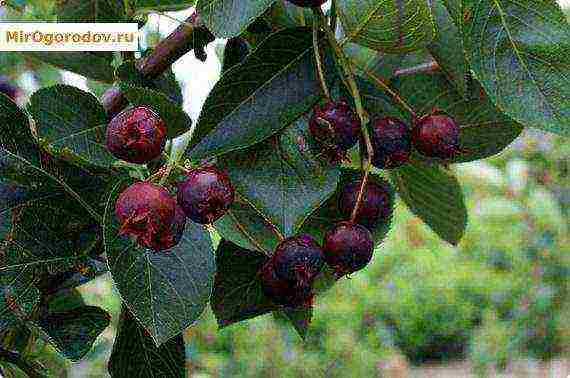
The dignity of the Ballerina is not only in a slender silhouette, but also in delicious berries

Harvestable and "friendly" Martin
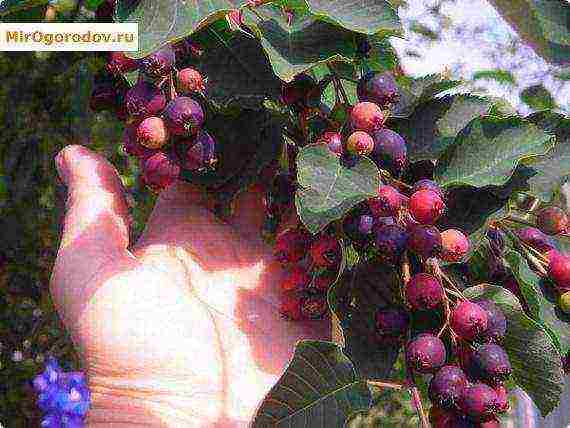
The fruit cluster of the Smokey variety is not just 5-6 berries, but a whole "grape" bunch
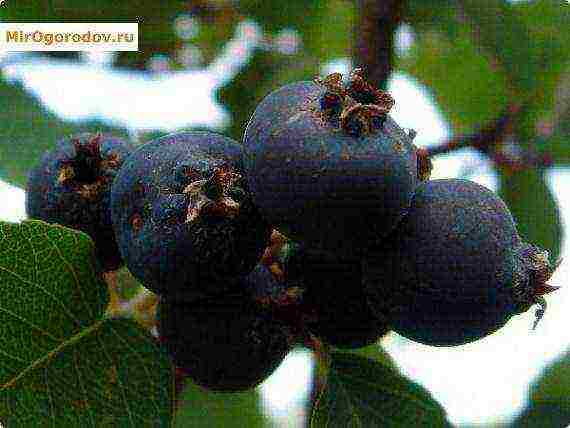
A distinctive feature of Irgi Slate is blue-black, large fruits
Note! Irga Canadian Lamarck is often ranked among the varieties, although it is a species that is close in botanical characteristics. Among the characteristics of this plant attractive to the gardener, decorativeness is in the first place. As a tapeworm, it will decorate the lawn, place accents in group plantings. The shrub lends itself well to cutting.
Growing irgi in the regions of Russia
Irga canadian is such an unpretentious plant with a high natural potential for survival in unfavorable conditions that most of its varieties are successfully cultivated in Ukraine and Belarus, they are suitable for the Baltic States, the Moscow region and other regions with a cold climate.
In the middle lane
The main problem of growing fruit and berry crops in this region is not so much the frosty winter as the unstable spring weather. Prolonged thaws, return frosts often lead to freezing of flower buds, and gardeners are left without a crop. Irga is not threatened, since most of its varieties are resistant to spring temperatures down to -7⁰ С, which is the norm for the middle lane.
In order to be guaranteed to be with the harvest, we recommend growing such varieties of foreign selection as Slate, Pambina, Smokey, Northline, Thyssen.
In outskirts of Moscow
Irga canadian, with proper planting and minimal care in the suburbs, will delight you with gorgeous flowering and an abundant harvest of sweet fruits. The weather here allows the berry to pick up the right amount of sugar and acquire a pleasant specific taste and aroma. The following varieties received rave reviews from amateur gardeners:
- Pambin;
- Smokey;
- undersized up to 1.5 m Northline;
- high-yielding Sturgeon;
- time-tested Thyssen;
- rare Mandan et al.

Gorgeous bush of irgi Smoky in the suburbs
In the Urals and Siberia
Irga grows and bears fruit even where apple and pear trees cannot stand, therefore its large-fruited varieties are a godsend for Siberia and the Urals. It is no coincidence that this tasty and healing berry is called northern raisins.
The Canadian varieties Slate, Mandan, Pambina, domestic cultivars Krasnoyarskaya, Surprise have passed the test of Russian frosts and received registration in this region. Some gardeners try to grow the Bluessant variety, but its frost resistance ends at -35-37⁰ C.
Features of growing irgi in central Russia:
Moscow, Russia, on the site since 11.01.2017
Have you read it? Don't forget to rate
(
estimates, average:
out of 5)
Irga canadian is a very decorative and abundantly fruiting shrub. Its berries are not only tasty, but also very healthy. The plant is appreciated by gardeners for its general unpretentiousness, high yield, immunity to many common diseases and pests.
Description of irgi canadian
Irga is a deciduous tree-like shrub from the rose family. In nature, it is mainly distributed in North America. There it grows like a weed without any care, including on the sides of roads, as well as on the edges of forests, on the slopes of mountains. In Russia, some varieties are found in the Crimea, in the Caucasus. The period of productive life of the shrub is quite long, at least 45-50 years. Moreover, it is distinguished by its rapid growth and early maturity. The first crop is harvested within 3-4 years after planting in a permanent place, by the age of 8-10 years, the irga reaches the maximum possible indicators. On average, you can count on 20-25 kg of berries per bush. They ripen in the first half of July.
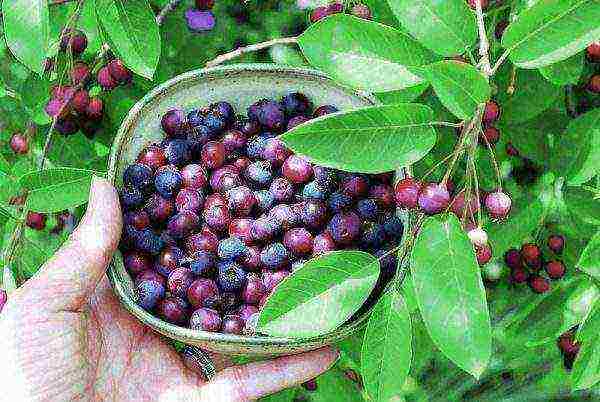
The first crop of irgi is harvested within 3-4 years after planting in a permanent place
Since the temperate climate is ideal for irgi, it is by nature intended for cultivation in most of Russia. High frost resistance allows her to winter without special shelter, not only in the Moscow region, but also in the North-West region. As practice shows, the plant survives and bears fruit even in the forest-tundra, tundra.
Irga canadensis, cultivated by gardeners since the 17th century, is known by many different names. At home (in Canada) it is called a word borrowed from the language of the Aboriginal Indians - "saskatoon". Other nicknames - "northern grapes", "wine berry" (irga is widely used for home winemaking), "shade bush", "children's", "useful" or "June berry", "coryne" (due to the similarity with small black grapes) ...
The average height of an adult plant reaches 2–7 m. Moreover, it can have 20-25 trunks. Shoots are long, with smooth bark, slightly drooping under their own weight. Young branches cast reddish or brick, then gradually turn brown. The crown is spreading, in the form of an ellipse or umbrella.
The leaves are not too large (up to 10 cm in length), ovoid, soft to the touch. The surface of the leaf is rough on both sides, covered with a short soft "pile", which makes it appear covered with silvery frost. Young, freshly blossomed leaves are olive-colored with a brown undertone, in summer they are characterized by a bluish-gray or pinkish tint, and by autumn they acquire a very spectacular crimson hue interspersed with crimson-raspberry, dark purple and orange-golden. The edges are cut with small "teeth".
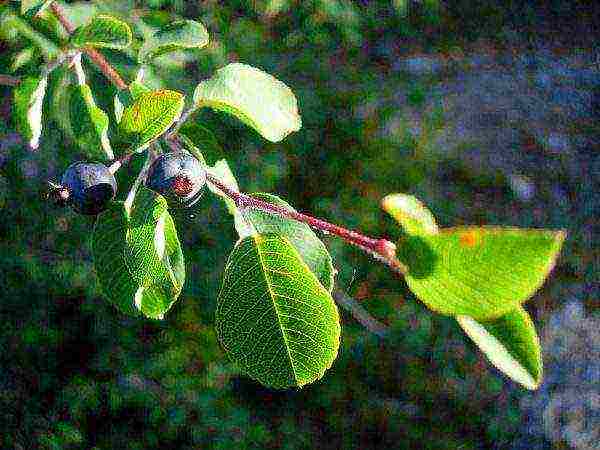
Leaves of Irga canadensis change color during the season
The root system of the Irga is well developed, but superficial. Most of the roots are located at a distance of 40-50 cm from the surface of the earth, some go deep into the depth of 90-100 cm. But in diameter they grow up to 2-2.5 m. The plant very actively forms basal shoots, quickly spreads over the garden area.
It is extremely difficult to uproot an irga completely, even if you specifically set such a goal.

In the fall, Irga canadian looks very impressive
Flowering occurs in the last decade of April or early May. It lasts 12-15 days. The shrub looks very impressive at this time.
Irga is a good honey plant, attracting bees and other insects to the site. Its name, translated from Latin (Amelanchier), means "to bring honey."
Flowers rarely suffer from recurrent spring frosts; they can withstand a short drop in temperature down to -5 ° C. The buds are collected in beautifully falling brushes of 5-12 pieces. Almost everyone is a future berry. The petals are snow-white or vanilla-cream.
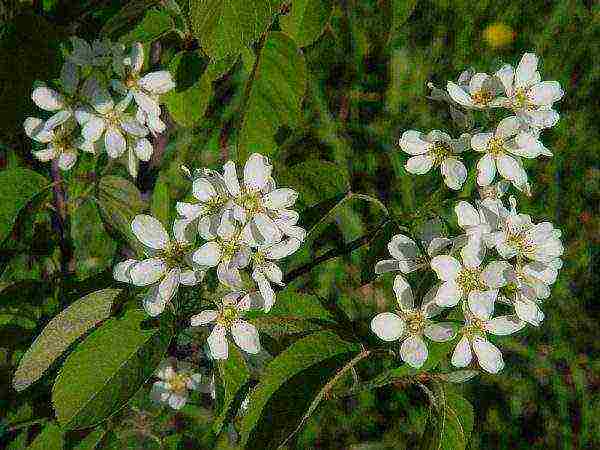
Flowers of canadensis canadensis attract many pollinating insects to the site.
The fruits of the irgi are round, in the form of an almost regular ball. Ripe berries are colored inky purple with a bluish tinge, slightly underripe - in dark blue, unripe - in pink. The harvest does not ripen at the same time, so on the bush you can see fruits of all three shades at once. Of all types of irgi, it is the Canadian one that has the best taste. The pleasant sweetness is due to its high sugar content and low fruit acid content.

The harvest of Irgi canadensis ripens gradually, over several weeks.
Irgi berries are suitable for home canning, but apples, red or black currants are added to preserves, compotes, and jams to add a slight sourness. Irga juice is very useful for the heart and blood vessels. But you won't be able to squeeze it out of freshly picked fruits. The berries should be allowed to lie in a dry, dark place for 5–6 days. If you leave it there for 1.5–2 months, the irga will turn into something similar to raisins.
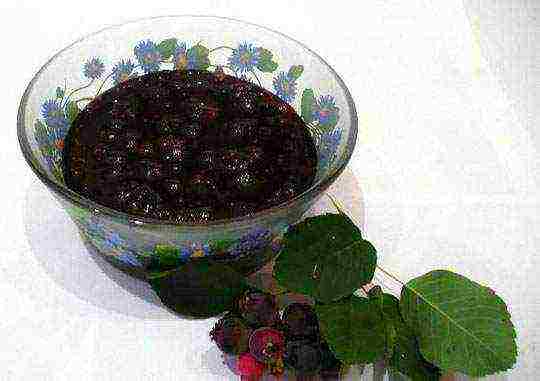
Irga, alone or together with other berries and fruits, is widely used in home canning
Varieties popular with gardeners
Most of the varieties grown in garden plots are bred in Canada, but Russian breeders also have their own achievements. The most popular are the following varieties:
- Pembina. The bush is almost spherical, 4.5–5 m in diameter, very decorative at any time of the year.It is distinguished by the reluctant formation of root growth, which is, in principle, atypical for irgi. The diameter of the berry is 1.4–1.5 cm;
- Smoky. One of the most popular varieties, almost a standard. It is grown on an industrial scale at home. Differs in high immunity. It grows up to 4–4.5 m. The shoots are clearly numb, the crown is in the shape of an umbrella. It blooms only in the last decade of May, when the probability of recurrent spring frosts is already minimal. The average diameter of the fruit is about 1.5 cm. The berries are very sweet, juicy, without astringency. The yield is high - more than 25 kg per adult plant;
- Northline. The bush consists of at least 25 trunks, erect shoots. The height is about 4 m, the crown diameter is 5.5–6 m. The average diameter of the berries is 1.6–1.7 cm, unlike most other varieties, they ripen at the same time. Their shape is not round, but rather ovoid. The fruits can be harvested not only by hand, but also in a mechanized way. Root growth is very abundant. A pollinator variety is required for the highest possible yield;
- Sturgeon. Sprawling shrub, 2.5–3 m high. It has a high yield and excellent fruit taste. The berry clusters are very long, resembling grapes;
- Thiessen. It grows up to 5 m in height, the crown is wide, spreading. The plant blooms early, the harvest ripens at the end of June. The berries are large, 1.7–1.8 cm in diameter, sweet, with a slight sourness. The pulp is very juicy. Fruiting lasts for several weeks. Frost resistance up to -30ºС;
- Martin. One of the Thiessen clones. A compact bush up to 3 m high and 3–3.5 m in diameter. The average fruit diameter is 1.5 cm or more. The yield is not too high, the formation of root shoots is moderate. Fruiting is amicable. The variety has a high immunity against diseases, is rarely affected by pests. The berries ripen 1.5–2 months after flowering;
- Sleith. One of the earliest varieties, the berries are almost black. They are distinguished by excellent taste and aroma. The average fruit diameter is 1.2–1.4 cm. Fruiting is amicable. Winter hardiness at the level of -32 ° C;
- Mandam. The variety is of medium ripening, the shrub is low, up to 3 m. Fruiting is stable. Berries with a diameter of more than 1.5 cm, there is no sourness in the taste;
- Ballerina. The shrub is tall (6 m and more), the shoots are very weak. The berries are juicy and very sweet, with hints of almonds in the aroma. It tolerates adverse environmental conditions well, grows and bears fruit even in the city;
- Nelson. Almost spherical shrub with a diameter of about 4.5 m. The berries are not too large, 1.2–1.3 cm. The pulp is very juicy, with a tart taste and a slight sourness. The variety has a genetically built-in immunity to rust, blooms 7-10 days later than most varieties of irgi, respectively, less often falls under recurrent frosts;
- Honeywood. The height of the bush is about 5 m, the diameter of the crown is 3.5–4 m. The first crop is harvested within 2–3 years after planting. The berries are dark blue; as they ripen, they acquire a purple hue. They can be spherical or slightly flattened. The average diameter of the fruit is about 2 cm. The clusters are long (each with 9-15 berries), reminiscent of grapes. The pulp is very aromatic, with a slight tart aftertaste. Little root growth, flowering later. Fruiting lasts 2-3 weeks;
- JB-30. The crown is 5.5–6 cm in diameter, the height of the bush is about the same. The berries are almost indistinguishable in taste from wild irgi, but much larger - about 1.7 cm in diameter. Perfectly ripe fruits are dark blue, yield - about 20 kg per bush;
- Bluff. One of the latest achievements of Canadian breeders, is still not widespread among amateur gardeners. The berries are not too large (1–1.2 cm in diameter), but they are ideal for processing due to the fact that their seeds are very small. The taste is pleasant, slightly tart;
- Prince William. The bush is compact, with a diameter of no more than 2.5 m. The variety is distinguished by high cold resistance and decorative effect.In autumn, the orange-scarlet leaves are kept on the plant until the first frost. The average diameter of the berry is 1.2 cm;
- Pierson. Canadian variety. The plant is powerful, multi-stemmed. Differs in intensive formation of root growth. The average fruit diameter is 1.8 cm or more. The taste is excellent. Blooms late, harvest ripens in early August;
- Forestbourgh. The bush is about 4 m high, at first the erect shoots will gradually disappear. Not too much root growth is formed. Berries with a diameter of 1.4-1.6 cm, collected in dense clusters of 8-13 pieces. The fruits ripen together. Winter hardiness up to -40 ° C, the variety is also resistant to drought. Immunity against diseases and pests is high;
- Krasnoyarsk. Russian variety of late ripening. The bush is not very tall, 3.5–4 m. The berries ripen in the last decade of July or early August. It depends on how warm and sunny the summer is. Differs in winter hardiness at the level of -40 ° C and more. Fruits are 1.8–2 cm in diameter, the taste is pleasant, sweet and sour.
Photo gallery: varieties of canadian irgi popular among gardeners
There is Irga Lamarca, which is often characterized as one of the varieties of Canadian Irga. But in fact, this is a separate plant species. Irga Lamarca is most often used in landscape design, the flowering plant looks very beautiful.
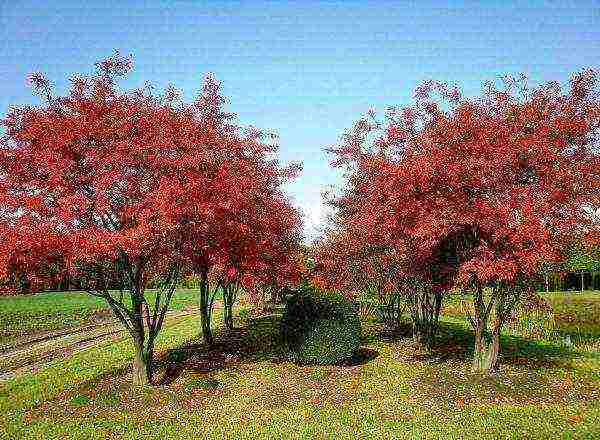
Irga Lamarca is widely used in landscape design
It differs from the Canadian one in the larger size of the flowers, the abundance of flowering and the copper-red tint of young leaves. Irga Lamarca also bears fruit, but its berries are small (up to 1 cm in diameter), and the yield is not too high - 5–7 kg per adult plant.
Planting procedure
Irga is an unpretentious plant. This also applies to the choice of the planting site and the quality of the soil. It tolerates shade well, does not suffer from cold northern winds, therefore, hedges are often formed from tall shrubs around the perimeter of the site, thus protecting other plantings. Next to the irga, you can place other berry bushes - raspberries, gooseberries, currants. In an open place, the culture also grows well, but does not like direct sunlight.
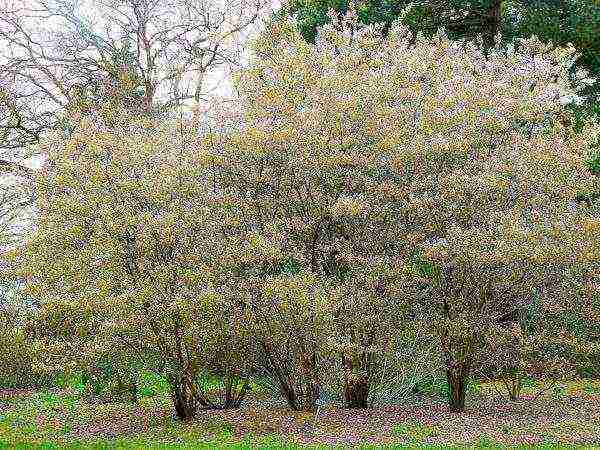
Irga canadian can easily endure partial shade, the bright sun for her is not the best option
Irga is planted both in spring and autumn. It depends on the climate in a particular region. If it is moderate, then spring is more suitable. Over the summer, the plant will definitely have time to adapt to new habitat conditions. In areas with a subtropical climate, planting can be planned for September and even for the first half of October, being sure that at least 2–2.5 months are left before the first frost.
The seedlings purchased in the fall can be preserved until next spring without compromising quality. They are planted in a container filled with wet sawdust or a mixture of peat and sand, which is removed to a dark place with a temperature slightly above 0 ° C. There are other ways - to dig in the seedlings in the garden bed, placing them at an angle, and then pour a high snowdrift on top, or simply wrap them in several layers of breathable covering material and throw snow.
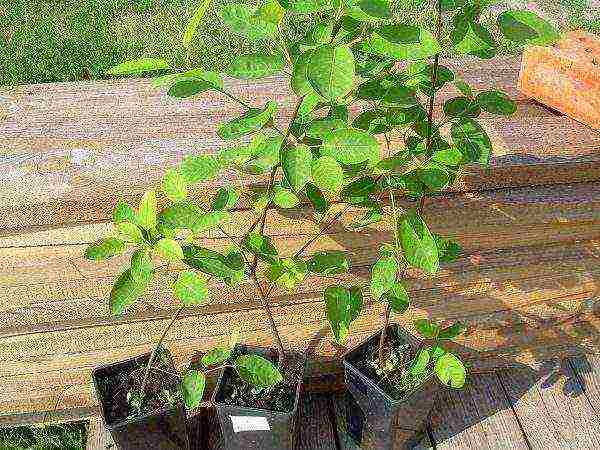
Seedlings of canadian irgi are most often purchased in the fall, at this time there is more choice
The pit for the irgi is prepared in advance, at least a few weeks before the planned planting. Enough about 50 cm in depth and 60–65 cm in diameter. From fertilizers to the top layer of fertile soil add humus (15–20 l), simple superphosphate (200–250 g), potassium sulfate (70–80 g).
Coarse river sand (about 10 liters) and a drainage layer at the bottom will help to make the soil looser.

A deep planting pit for the irgi is not needed
With the simultaneous planting of several plants, at least 2-3 m are left between them. If the formation of a hedge is planned, the irgu is planted in a checkerboard pattern with an interval of 50-70 cm. Sufficient area for feeding an adult plant is 6-10 m².
Irga does not impose special requirements on the quality of the soil, however, the ideal option for it is a light but fertile loamy or sandy loam soil. If the soil is very poor, the shrub, in search of food, will begin to grow very actively in breadth, forming a huge amount of root growth, which is almost impossible to eradicate. The acid-base balance does not matter for irgi, but it does not relate too well to sour soil. If the groundwater is closer than 2–2.5 m from the surface, it is advisable to find another site, otherwise the roots may start to rot.
When planting irgi, the root collar should be deepened by 5–7 cm, and the seedling itself should be tilted at an angle of about 40–45º. This contributes to the active formation of adventitious roots. The tree must be watered abundantly (10-15 liters). Then the soil in the trunk circle is mulched. The shoots of the seedling are cut, shortening by about a third. Each should have 5–6 growth buds.
Video: planting irgi
Culture care
Care consists in keeping the trunk circle clean, periodically loosening the soil, applying fertilizers and watering. The need for shelter for the winter depends on the varietal qualities of a particular variety.
Watering
Frequent and plentiful watering is not needed. The plant has a developed root system, so it may well do with natural precipitation. The exception is very hot and dry weather. In this case, Irga canadensis is watered every 7–12 days, spending 20–30 liters per adult plant. Sprinkler irrigation is the preferred method. It allows you to wash away dust from the leaves of the bush at the same time as watering.

If technically feasible, irga is watered by sprinkling, imitating natural precipitation
The optimal time for the procedure is early morning or late evening. If the sun is shining brightly, the water droplets remaining on the leaves can act as lenses, the shrub will get sunburn.
Fertilization
If all the necessary fertilizers have been added to the planting pit, in the first 3-4 years of being in the open field, the Canadian Irga can do without additional fertilizing. Then, every spring, 15–20 g of any nitrogen-containing fertilizer is distributed in the near-stem circle during the first loosening (you can prepare a solution by diluting the same amount in 10 liters of water). At the end of September, the plant is fed with phosphorus and potassium so that it can properly prepare for winter. To do this, use simple superphosphate and potassium sulfate (20-25 g each) or complex preparations (ABA, Autumn). A natural alternative is wood ash (about 0.5 l).
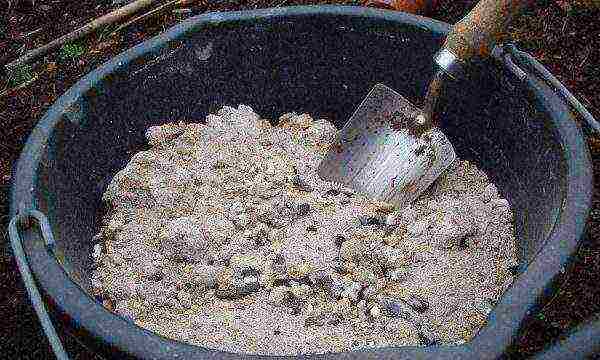
Wood ash - a natural source of potassium and phosphorus
Irga gratefully responds to any fertilizers, especially organic ones, with an increase in the growth rate and an increase in yield. Starting from the moment when the flowering ends, it is advisable to water it every 3-4 weeks with infusions of nettle leaves, dandelion, fresh cow dung or bird droppings. The nutrient solution is not applied directly under the roots; it is better to make several annular grooves, stepping back about 0.5 m from the trunk.About half an hour after feeding, the bush is watered abundantly so as not to burn the roots. When the moisture is absorbed, the soil is gently loosened.
In 12-15 days after flowering, foliar dressing can be carried out using microelements. In 10 liters of water dissolve 1–2 g of copper sulfate, zinc sulfate and boric acid.
Pruning
Irga is distinguished by its growth rate, therefore it needs periodic pruning. But this should not be abused, the culture does not tolerate the procedure very well.
Most often it is formed as a multi-stem bush. This configuration is provided by nature itself, it only needs to be slightly tweaked. To do this, during the first 4–5 years after planting in the ground, all the shoots are cut to the point of growth, leaving only 2–3 of the most powerful and developed ones. An adult shrub, therefore, should consist of 15–20 branches of different ages.
The term of productive life of the canadian irgi is long, so it needs rejuvenating pruning about every 10–12 years. A signal for this is a sharp decrease in the growth rate of the shrub - no more than 10 cm per year. In this case, it is imperative to get rid of all no longer fruiting, weak, deformed, elongated shoots. All other branches are shortened to 2–2.5 m. There is another version of rejuvenation - every year, completely cut off the two oldest shoots.
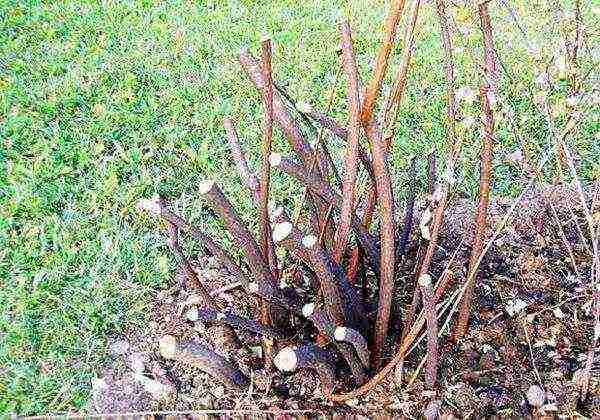
A radical way to prune canadensis is to leave only hemp from the shoots
If the cut diameter is more than 0.5 cm, it must be disinfected with a 2% solution of copper sulfate and thoroughly covered with garden varnish.
In the canadian irgi growing in a hedge, all available shoots are shortened by 10-15 cm annually. This stimulates the shrub to branch more intensively.
Sanitary pruning is carried out every spring. It is needed to get rid of the broken, dry, frozen branches over the winter. They also remove those that grow down and into the crown, thickening it, breaking the neat outlines of the bush.
Preparing for winter
Irga canadian - frost-resistant culture. Therefore, in regions with a subtropical climate, it definitely does not need shelter for the winter. There you can limit yourself to cleaning the trunk circle from debris and renewing the mulch layer.
But in the European part of Russia, for example, in the Moscow region, the situation is different. There winters are quite warm, snowy, and abnormally cold, with a minimum amount of precipitation. Therefore, it is better to play it safe and protect young seedlings by covering them with suitable-sized boxes filled with hay, sawdust, shavings. Adult specimens at the base of the shoots are covered with a layer of peat or humus about 25 cm high. As soon as the snow falls, a high snowdrift is erected at the roots.
Common diseases and pests
Irga canadian by nature has high immunity, so it rarely suffers from pathogenic fungi and pests. The main threat to the crop is birds. The only way to reliably protect the berries from them is to put a fine mesh over the bush. But this is not always possible due to the size of the plant. All other methods (scarecrows, shiny ribbons, ratchets) give only a short-term effect, for 2-3 days, no more. Birds quickly realize that these objects are not capable of causing them any harm.

The net is the only reliable way to protect the irgi crop from birds.
But still, occasionally, if the summer is very cold and rainy, the following diseases can develop:
- tuberculariosis. Leaves and young shoots acquire an unnatural red-purple hue, dry quickly and wither. Small reddish-pink "warts" may appear on the branches. All branches, even slightly damaged, are cut and burned. The shrub is sprayed twice with an interval of 7–12 days with a 1% solution of Bordeaux liquid or copper sulfate;
- gray rot. On the shoots at the base and in the places where the leaf petioles are attached, on the fruits, "weeping" black-brown spots spread, gradually covering up with a fluffy light gray bloom with small black blotches. The most common cause is abundant watering, so it is stopped immediately. The shrub and soil in the near-trunk circle is powdered with sifted wood ash, crushed chalk, colloidal sulfur;
- leaf spot. The spots can be of a wide variety of shades, from almost white to dark brown. It depends on the specific type of fungus causing the disease. For the fight, any copper-containing drugs are used (Topaz, Skor, Horus). Usually, if the problem is noticed at an early stage, 2-3 treatments with an interval of 5-7 days are enough.
Gallery: Canadian Diseases Affecting Irgu
The most common pests of irgi are usually not able to cause significant damage to the shrub. But this does not mean that there is no need to fight them.
- seed eater. Adults lay eggs in fruit ovaries. The hatched larvae eat the seeds from the berries and pupate in them. Damaged fruits shrivel and fall off. For prophylaxis, the plant is sprayed with Karbofos immediately after flowering, if suspicious symptoms are detected, Karate, Aktellik or Fufanon are treated;
- speckled moth. Caterpillars feed on plant tissues, eating out narrow passages in the leaves. Damaged leaves turn yellow and fall off. After harvesting, for prevention, irgu is sprayed with Lepidocide or Bitoxibacillin. Also, Kinmiks, Mospilan, Konfidor-Maxi are used to combat motley;
- leaflet. Most often, the pest manifests itself in early summer. Adults lay eggs in leaves, rolling them up with a tube. 3-5 days before flowering, the bush is sprayed with Nexion solution or tincture of wormwood, tobacco crumbs. Adults are fought with the help of Alatar, Bitoks, Binom.
Photo gallery: crop-hazardous pests
Gardeners reviews
Irga canadensis in nature grows mainly in the northern hemisphere, that is, it is ideal for cultivation in most of Russia. The plant looks very attractive throughout the growing season. Even a novice gardener will cope with caring for him; he will not have to wait long for the first harvest. Berries, the taste of which are very popular with children, are very healthy and versatile.
